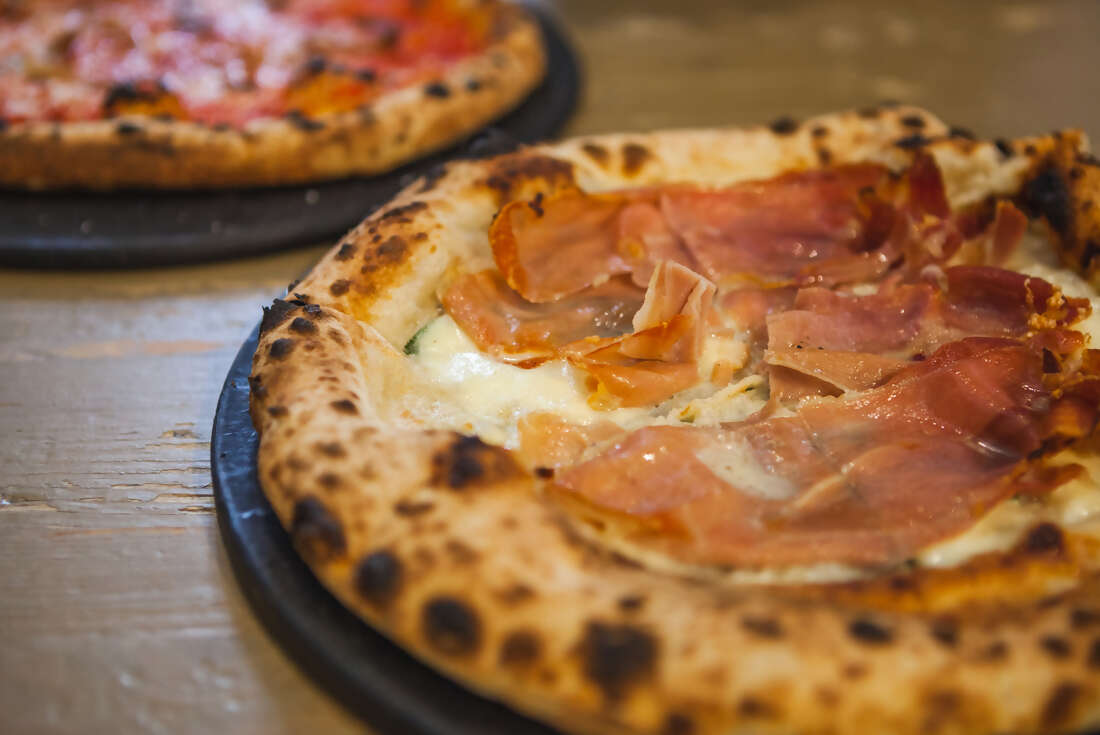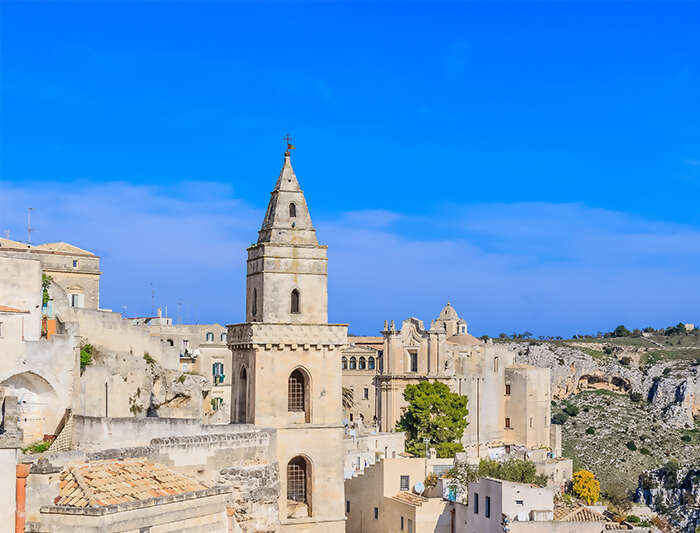 Italians are the masters of creating simple dishes that sing with flavour. Regional, seasonal and as fresh as possible, Italy’s cuisine is simple, satisfying and made with heart. On this food odyssey, you get the best of the northern and southern Italian cuisine. Dine on a converted fishing platform on the Adriatic Sea, take in the sights of the cave city of Matera while learning to cook with the locals, sample olive oil and homemade wine at a small, family-run farm just outside of Rome and munch mozzarella cheese, sip limoncello and learn to prepare the world's best pizza in the place where it was born. Indulge in the diverse array of unforgettable food you’ll find on this adventure that travels from Venice to Naples.
Italians are the masters of creating simple dishes that sing with flavour. Regional, seasonal and as fresh as possible, Italy’s cuisine is simple, satisfying and made with heart. On this food odyssey, you get the best of the northern and southern Italian cuisine. Dine on a converted fishing platform on the Adriatic Sea, take in the sights of the cave city of Matera while learning to cook with the locals, sample olive oil and homemade wine at a small, family-run farm just outside of Rome and munch mozzarella cheese, sip limoncello and learn to prepare the world's best pizza in the place where it was born. Indulge in the diverse array of unforgettable food you’ll find on this adventure that travels from Venice to Naples.Highlights
Italy is an epicurean paradise, but as a visitor it can be hard to escape the tourist traps. Your group leaders will give you an insider's guide and all the local knowledge.
Tasting the real balsamic vinegar in an attic acetaia is a revelation – it'll be hard to go back to the mass-produced version after this!
Make lunch with a family that lives just outside of Rome, sampling homemade wine and olive oil before sitting down for a farmhouse-style feast.
In Bari, join a local expert for a masterclass where you will learn to make Apulian focaccia and the famous orecchiette (pasta shaped like ‘little ears’).
Lose yourself in the ancient cave-city of Matera, which sits dramatically on the edge of the Gravina gorge.











- You will visit the following places:
-

Venice
Venice is a city in northeastern Italy sited on a group of 118 small islands separated by canals and linked by bridges. The city is renowned for the beauty of its setting, its architecture, and its artwork. The city in its entirety is listed as a World Heritage Site, along with its lagoon. Venice has been known as the La Dominante, Serenissima, Queen of the Adriatic, City of Water, City of Masks, City of Bridges, The Floating City, and City of Canals. It has also been described as being one of Europe's most romantic cities. It is truly an amazing, stunning and interesting city for the adventurous to explore!
-

Bologna
Bologna is the lively, historic capital of the Emilia-Romagna region, in northern Italy. The first settlements date back to at least 1000 BC. Home to the oldest university in the world, University of Bologna, founded in 1088, Bologna hosts thousands of students who enrich the social and cultural life of the city. Famous for its towers and lengthy porticoes, Bologna also has a well-preserved historical centre (one of the largest in Italy) thanks to a careful restoration and conservation policy which began at the end of the 1970s, on the heels of serious damage done by the urban demolition at the end of the 19th century as well as that caused by wars. An important cultural and artistic centre, its importance in terms of landmarks can be attributed to a varied mixture of monuments and architectural examples (medieval towers, antique buildings, churches, the layout of its historical centre) as well as works of art which are the result of a first class architectural and artistic history. Bologna is also an important transportation crossroad for the roads and trains of Northern Italy, where many important mechanical, electronic and nutritional industries have their headquarters. Bologna is home to numerous prestigious cultural, economic and political institutions as well as one of the most impressive trade fair districts in Europe. In 2000 it was declared European capital of culture and in 2006, a UNESCO “city of music”. The city of Bologna was selected to participate in the Universal Exposition of Shanghai 2010 together with 45 other cities from around the world. Bologna is also one of the wealthiest cities in Italy, often ranking as one of the top cities in terms of quality of life in the country: in 2011 it ranked 1st out of 107 Italian cities.
-

Rome
Rome is the capital of Italy and the country's largest and most populated city and comune, with over 2.7 million residents in 1,285.3 km2 (496.3 sq mi). Rome's metropolitan area is the second largest in Italy Milan, with some 3.7 million residents. The city is located in the central-western portion of the Italian Peninsula, on the Tiber River within the Lazio region of Italy. The historic centre of the city is a UNESCO World Heritage Site. With wonderful palaces, millennium-old churches, grand romantic ruins, opulent monuments, ornate statues and graceful fountains, Rome has an immensely rich historical heritage and cosmopolitan atmosphere, making it one of Europe's and the world's most visited, famous, influential and beautiful capitals.
-

Bari
Bari is a port city on the Adriatic Sea, and the capital of southern Italy’s Puglia region. It is the second most important economic centre of mainland Southern Italy after Naples, and is well known as a port and university city, as well as the city of Saint Nicholas. Bari is made up of four different urban sections. To the north is the closely built old town on the peninsula between two modern harbours, with the Basilica of Saint Nicholas, the Cathedral of San Sabino (1035–1171) and the Hohenstaufen Castle built for Frederick II, which is now also a major nightlife district. To the south is the Murat quarter (erected by Joachim Murat), the modern heart of the city, which is laid out on a rectangular grid-plan with a promenade on the sea and the major shopping district (the via Sparano and via Argiro).
-

Matera
-

Naples